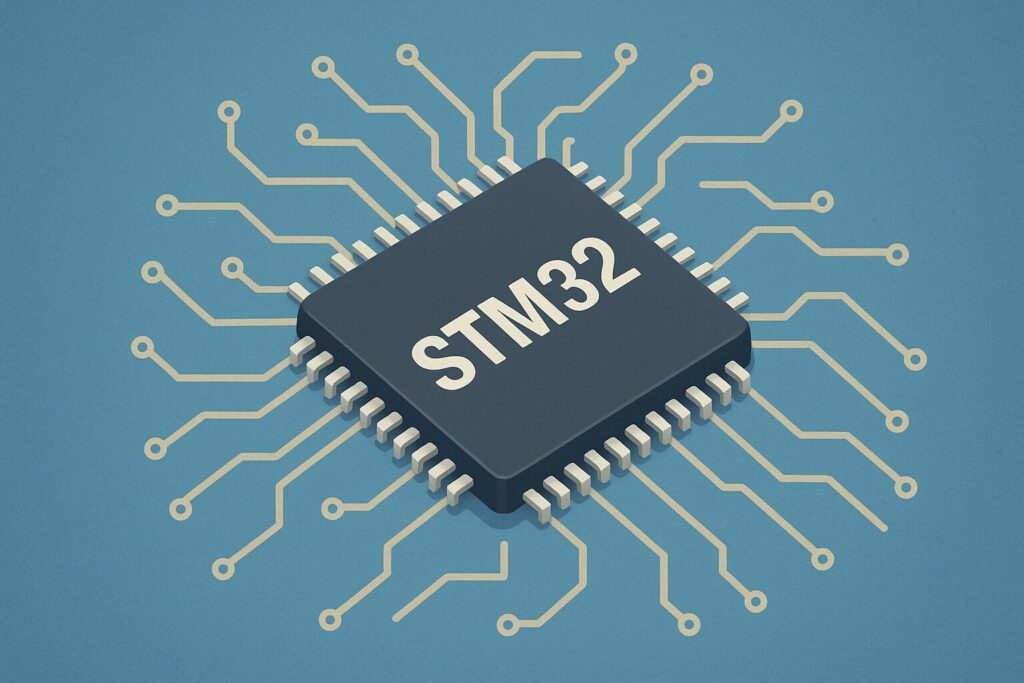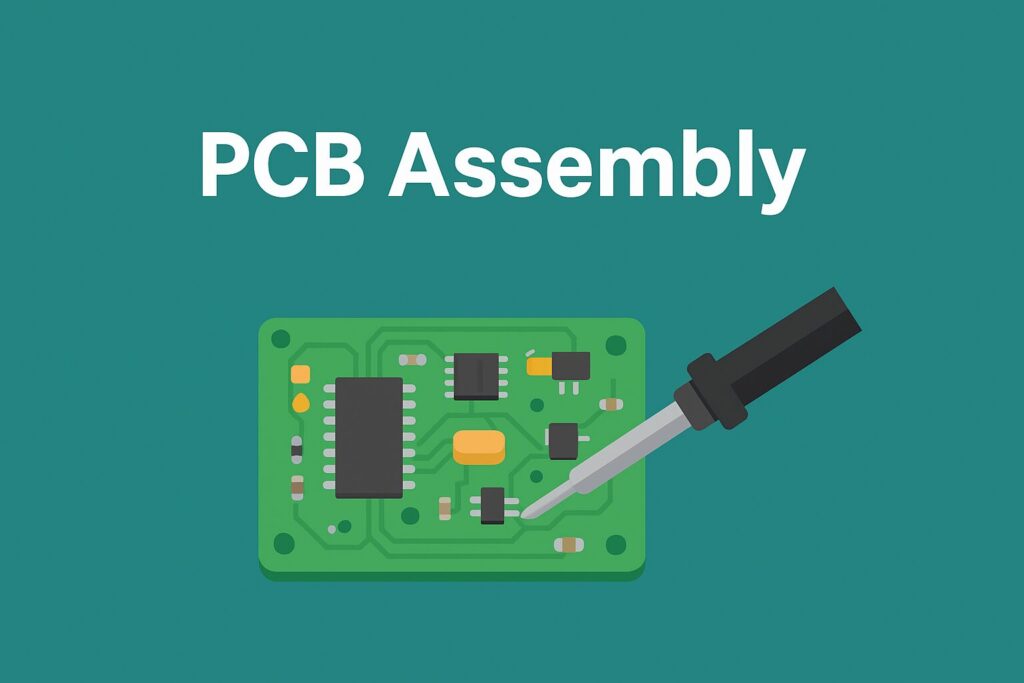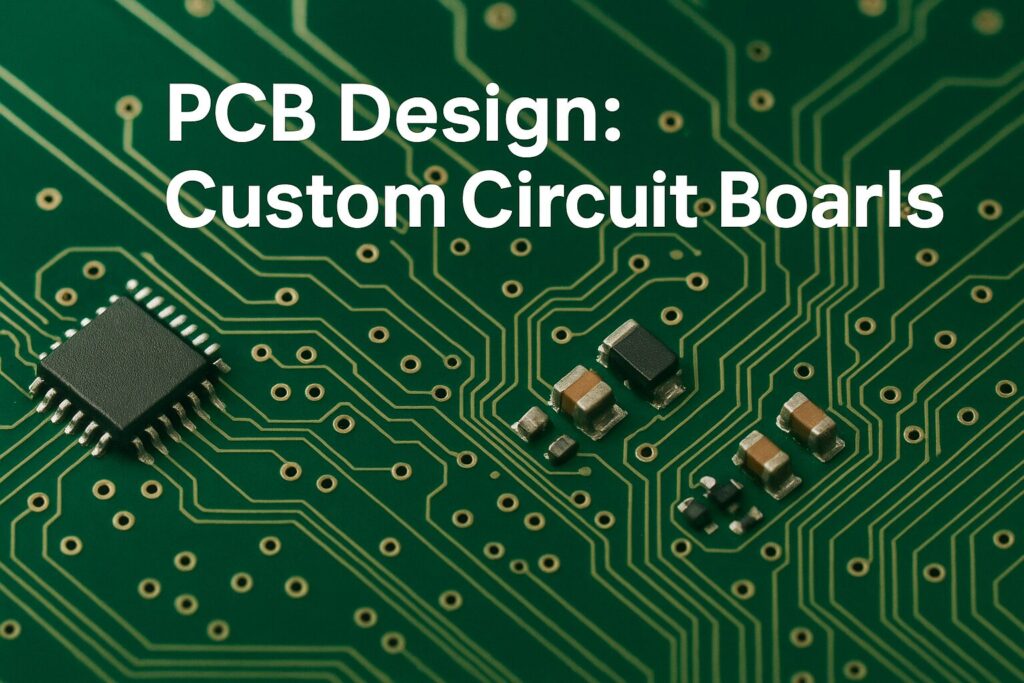What is an STM32?
STM32 is one of the most widely used microcontroller families in electronics and embedded systems today. STM32 microcontrollers are based on the ARM Cortex-M core, a powerful processor architecture found in many modern devices. A processor can be thought of as the “brain” of a computer or microcontroller: it executes software instructions, processes data, and controls electronic components. That’s exactly what the processor in an STM32 does – it runs the developer’s program, processes sensor data, and controls connected devices.
Depending on the model, STM32 offers different memory sizes, clock speeds, and built-in peripherals, giving developers a very flexible platform for their projects. This text explains what the STM32 is, how it works, and why it has become so popular.
Key Features of STM32
You can think of an STM32 as a tiny computer on a chip. It contains:
- A processor (CPU)
- RAM
- Flash memory
- Digital and analog input/output pins (GPIO)
This allows many tasks to be handled with just a single chip. Some of its main features include:
- ARM Cortex-M core – fast and energy-efficient architecture
- RAM and Flash memory – for temporary and permanent data storage
- GPIO pins – for connecting motors, LEDs, sensors, displays, etc.
- Analog and digital peripherals – ADC, DAC, UART, I2C, SPI, CAN, and more
- Low-power modes – suitable for battery-powered devices
This versatility makes STM32 suitable for simple learning projects as well as complex industrial control systems.
How Does an STM32 Work?
An STM32 works like a computer but is optimized for specific tasks. The process can be summarized as follows:
- Loading the program:
Firmware is loaded into the microcontroller’s flash memory. This program defines what tasks the STM32 will perform. Once powered on, the program runs automatically. - Input and output functions:
The microcontroller can read data from sensors or control devices such as motors, LEDs, or relays. For example, pressing a button can turn on an LED. - Communication:
STM32 can exchange data with other microcontrollers, sensors, or computers using protocols like UART, I2C, SPI, or CAN. - Timing and interrupts:
Timers and interrupts enable time-critical operations. For example, a measurement can be taken every second. - Power management:
Special low-power modes reduce energy consumption significantly, ideal for IoT and battery-powered devices.
Applications of STM32
STM32 microcontrollers are used in a wide range of applications, such as:
- IoT devices and sensor networks
- Robotics and motor control
- Industrial automation and control boards
- Educational projects in electronics and computer science
- Wearables, medical devices, and energy-efficient mobile gadgets
Their popularity comes from the combination of strong hardware, low power consumption, and a wide selection of models.
Getting Started with STM32
Getting started is relatively straightforward. First, choose a development board, such as:
- STM32F103 “Blue Pill”
- STM32 Nucleo boards
Next, select a development environment (IDE). Common choices include:
- STM32CubeIDE – the official IDE from STMicroelectronics
- Keil uVision – a professional solution for complex projects
- PlatformIO / VS Code – a flexible and modern alternative
Programming is usually done in C or C++. Using STM32CubeMX, peripheral functions like GPIO, UART, or timers can be configured graphically and automatically converted into code.
Advantages of STM32
- High processing power thanks to the ARM Cortex-M architecture
- Wide selection of models for various applications
- Affordable, making it suitable for hobby projects
- Large community with plenty of examples and libraries
- Long product availability, making it industrial-grade
Conclusion
STM32 is a versatile, powerful, and energy-efficient microcontroller family used in hobby projects, education, research, and industry alike. Developers who need more control, flexibility, and performance in their electronics projects will find STM32 to be a robust and reliable solution. With a wide range of models, it can be used in everything from low-power devices to complex real-time systems. Additionally, developers benefit from extensive software support, an active community, and long-term availability, ensuring sustainable project development.
🔗 Get in touch with us :
Phone/WhatsApp: +41 76 212 8248
✉️ E-Mail: info@revantechnology.com
For detailed information about our services in electronics development & PCB design:
Revan Technology – Your partner for professional electronics and PCB development
Discover our recent work:
Revan Technology – Our Projects


